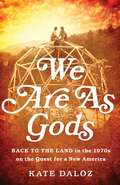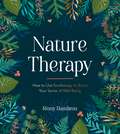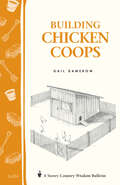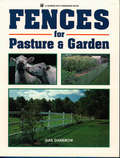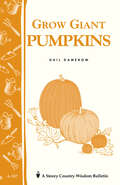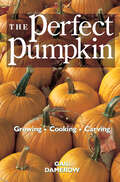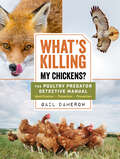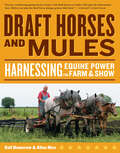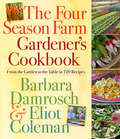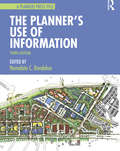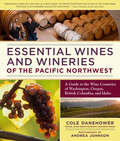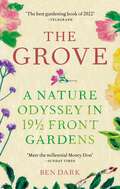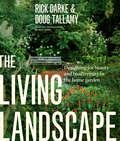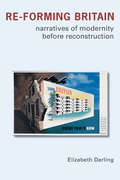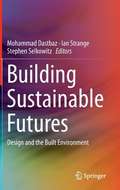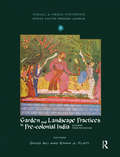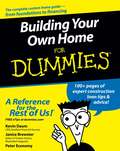- Table View
- List View
We Are As Gods: Back to the Land in the 1970s on the Quest for a New America
by Kate DalozBetween 1970 and 1974 ten million Americans abandoned the city, and the commercialism, and all the inauthentic bourgeois comforts of the Eisenhower-era America of their parents. Instead, they went back to the land. It was the only time in modern history that urbanization has gone into reverse.Kate Daloz follows the dreams and ideals of a small group of back-to-the-landers to tell the story of a nationwide movement and moment. And she shows how the faltering, hopeful, but impractical impulses of that first generation sowed the seeds for the organic farming movement and the transformation of American agriculture and food tastes. In the Myrtle Hill commune and neighboring Entropy Acres, high-minded ideas of communal living and shared decision-making crash headlong into the realities of brutal Northern weather and the colossal inconvenience of having no plumbing or electricity. Nature, it turns out, is not always a generous or provident host-frosts are hard, snowfalls smother roads, and small wood fires do not heat imperfectly insulated geodesic domes.Group living turns out to be harder than expected too. Being free to do what you want and set your own rules leads to some unexpected limitations: once the group starts growing a little marijuana they can no longer call on the protection of the law, especially against a rogue member of a nearby community.For some of the group, the lifestyle is truly a saving grace; they credit it with their survival. For others, it is a prison sentence. We Are As Gods (the first line of the Whole Earth Catalog, the movement's bible) is a poignant rediscovery of a seminal moment in American culture, whose influence far outlasted the communities that took to the hills and woods in the late '60s and '70s and remains present in every farmer's market, every store selling Stonyfield products, or Keen shoes, or Patagonia sportswear.
We Are As Gods: Back to the Land in the 1970s on the Quest for a New America
by Kate DalozAt the dawn of the 1970s, waves of hopeful idealists abandoned the city and headed for the country, convinced that a better life awaited. They were full of dreams, mostly lacking in practical skills, and soon utterly out of money. But they knew paradise when they saw it. When Loraine, Craig, Pancake, Hershe, and a dozen of their friends came into possession of 116 acres in Vermont, they had big plans: to grow their own food, build their own shelter, and create an enlightened community. They had little idea that at the same moment, all over the country, a million other young people were making the same move -- back to the land.We Are As Gods follows the Myrtle Hill commune as its members enjoy a euphoric Free Love summer. Nearby, a fledgling organic farm sets to work with horses, and a couple -- the author's parents -- attempts to build a geodesic dome. Yet Myrtle Hill's summer ends in panic as they rush to build shelter while they struggle to reconcile their ideals with the somber realities of physical hardship and shifting priorities -- especially when one member goes dangerously rogue. Kate Daloz has written a meticulously researched testament to the dreams of a generation disillusioned by their parents' lifestyles, scarred by the Vietnam War, and yearning for rural peace. Shaping everything from our eating habits to the Internet, the 1970s Back-to-the-Land movement is one of the most influential yet least understood periods in recent history. We Are As Gods sheds light on one generation's determination to change their own lives and, in the process, to change the world.
Nature Therapy: How to Use Ecotherapy to Boost Your Sense of Well-Being
by Rémy DambronNature therapy is the practice of reconnecting with the natural world to refresh your physical and mental well-being. Including tips to help you discover your connection with the outdoors, activity inspiration and a holistic approach to wellness, this book is the ultimate guide to unlocking the transformative power of nature.
Building Chicken Coops: Storey Country Wisdom Bulletin A-224 (Storey Country Wisdom Bulletin)
by Gail DamerowSince 1973, Storey's Country Wisdom Bulletins have offered practical, hands-on instructions designed to help readers master dozens of country living skills quickly and easily. There are now more than 170 titles in this series, and their remarkable popularity reflects the common desire of country and city dwellers alike to cultivate personal independence in everyday life.
Fences for Pasture & Garden
by Gail DamerowWhether you&’re trying to protect your garden from wildlife predators or want to keep your livestock from wandering too far, effective fencing can bring welcome peace of mind. Covering the pros and cons of a variety of fencing types, Gail Damerow shows you how to build a fence that works for your needs. With clearly illustrated instructions for building wire fences, rail fences, electric fences, woven fences, and more, you&’ll soon be creating effective enclosures that are guaranteed to save you time, money, and worry.
Grow Giant Pumpkins: Storey's Country Wisdom Bulletin A-187 (Storey Country Wisdom Bulletin)
by Gail DamerowSince 1973, Storey's Country Wisdom Bulletins have offered practical, hands-on instructions designed to help readers master dozens of country living skills quickly and easily. There are now more than 170 titles in this series, and their remarkable popularity reflects the common desire of country and city dwellers alike to cultivate personal independence in everyday life.
The Perfect Pumpkin: Growing/Cooking/Carving
by Gail DamerowThe big orange pumpkin is no longer just for Halloween! Gail Damerow shows you how to cultivate more than 95 varieties of pumpkin, and provides recipes for pumpkin pies, muffins, and even pumpkin beer. You&’ll also learn how to use pumpkins in a variety of craft projects, from carving unique jack-o&’-lanterns to creating pumpkin-scented creams and soaps. With tips on growing giant pumpkins, preserving your harvest through the winter, and much more, The Perfect Pumpkin will delight pumpkin lovers of all sensibilities.
What's Killing My Chickens?: The Poultry Predator Detective Manual
by Gail DamerowIn this detective manual for the poultry owner, best-selling author and chicken expert Gail Damerow shows chicken keepers how to identify which predators are likely to be troubling their flock from the clues left behind, and offers proven strategies for protecting poultry.
Draft Horses and Mules: Harnessing Equine Power for Farm & Show
by Gail Damerow Alina RiceHardworking and intelligent, draft horses and mules provide clean-energy power for an impressive array of tasks. Bringing strength and endurance to every job, from cultivating farmland and hauling logs to giving long quiet rides through the countryside, these animals love to work. In this illustrated guide, Gail Damerow and Anita Rice provide all the information you need in order to select, train, feed, care for, and work with your own team of draft horses or mules.
The Four Season Farm Gardener's Cookbook: From The Garden To The Table In 120 Recipes
by Barbara Damrosch Eliot ColemanBarbara Damrosch and Eliot Coleman are America’s foremost organic gardeners—and authorities. Barbara is the author of The Garden Primer, and Eliot wrote the bible for organic gardening, The New Organic Grower. Today they are the face of the locavore movement, working through their extraordinary Four Season Farm in Maine. And now they’ve written the book on how to grow what you eat, and cook what you grow.The Four Season Farm Gardener’s Cookbook is two books in one. It’s a complete four-season cookbook with 120 recipes from Barbara, a master cook as well as master gardener, who shows how to maximize the fruits—and vegetables—of your labors, from Stuffed Squash Blossom Fritters to Red Thai Curry with Fall Vegetables to Hazelnut Torte with Summer Berries.And it’s a step-by-step garden guide that works no matter how big or small your plot, with easy-to-follow instructions and plans for different gardens. It covers size of the garden, nourishing the soil, planning ahead, and the importance of rotating crops—yes, even in your backyard. And, at the core, individual instructions on the crops, from the hardy and healthful cabbage family to fourteen essential culinary herbs.Eating doesn’t get any more local than your own backyard.
The Planner's Use of Information
by Hemalata C. DandekarFor more than 35 years, planners have depended on The Planner's Use of Information to help them address their information needs. While the ability to manage complex information skillfully remains central to the practice of planning, the variety and quantity of information have ballooned in the last two decades. The methods of accessing and handling information– although often ultimately easier and faster– require new technical savvy. At the same time, planners themselves, and the constituents they serve, have changed. This completely revised and updated third edition of this popular book will serve the new generation of planners who work in a world where social media, cell phones, community embedded development, and a changing population have revolutionized the practice of planning. Edited again by Hemalata C. Dandekar, with chapters by leading experts in data collection, analysis, presentation, and management, The Planner's Use of Information empowers practitioners to use and address the impacts of twenty-first century technologies. The Planner's Use of Information offers a range of methods for addressing many kinds of information needs in myriad situations. It's an invaluable day-to-day resource for practicing planners and an ideal classroom text for courses in planning communication and analytical methods. Illustrations, real-life examples, cartoons, exercises, bibliographies, and lists of online resources enrich the text.
Essential Wines and Wineries of the Pacific Northwest: A Guide to the Wine Countries of Washington, Oregon, British Columbia, and Idaho
by Cole DanehowerSuperbly balanced pinot noirs; crisp rieslings; rich, heady syrahs: these are only a fraction of the expertly crafted wines being produced in the Pacific Northwest's diverse and distinctive wine countries. Second only to California in production, the Pacific Northwest is the largest wine region in North America, home to more than 1,000 wineries. What was once a young wine-growing area with a reputation for eccentricity is today recognized as a dynamic region producing world-class wines, with a focus on ecologically sound practices.This definitive volume profiles the wines, the people who make them, and the wine countries of Washington, Oregon, British Columbia, and Idaho. The journey begins with the region's climates and geology, which create a fascinating tapestry of wine-growing areas. Next, the book focuses on the unique qualities of each wine region, with profiles of more than 160 representative wineries to visit. Included are legacy wineries that helped to build the region’s reputation, prestige wineries with a national presence, under-the-radar artisan wineries that embody the pioneering spirit of the Northwest, and promising new wineries. Each profile lists the winery's signature, premium, value, and estate wines.Beautifully illustrated with photographs and helpful maps, this in-depth guide is a milestone in the North American literature on wine. It will enable wine lovers everywhere to plan their touring, select their wines, and explore and discover the riches of the Northwest's wine country.
The Grove: A Nature Odyssey in 19 ½ Front Gardens
by Ben Dark***'Ben Dark is such a wonderful writer - The Grove drew me in from the first line.' Lia Leendertz'The Grove is overflowing with delicious nuggets of cultural, social and garden history - and I adore Ben Dark's humour and humility in equal measure.' Advolly Richmond'A heartfelt romp through the wisteria and wilderness of London's horticulturally remarkable front gardens.' Jack Wallington'Fans of Ben Dark's mellifluous tones on The Garden Log podcast will be delighted by how perfectly his lyrical musings transfer to the printed page as, with infant son in tow, he invites the reader upon a series of horticultural expeditions inspired by the deceptively ordinary planting of the front gardens in a south London street. The kind of thoroughly enjoyable read where you realise, late in the day, that learning has snuck in by the back door, though you feel inclined to forgive the author on account of the fun you've had along the way.'Andrew O'Brien'Any walk is an odyssey when we connect with the plants around us. Each tree or flower tells a tale. Mundane 'suburban' shrubs speak of war and poetry, of money, fashion, love and failure. Every species in this book was seen from one pavement over twelve months and there is little here that could not be found on any road in any town, but they reveal stories of such weirdness, drama, passion and humour that, once discovered, familiar neighbourhoods will be changed forever.' Ben DarkThere is a renewed interest in the nature on our doorsteps, as can be seen in the work of amateur botanists identifying wildflowers and chalking the names on the pavements.But beyond the garden wall lies a wealth of cultivated plants, each with a unique tale to tell. In The Grove, award-winning writer and head gardener Ben Dark reveals the remarkable secrets of twenty commonly found species - including the rose, wisteria, buddleja, box and the tulip - encountered in the front gardens of one London street over the course of year. As Ben writes, in those small front gardens 'are stories of ambition, envy, hope and failure' and The Grove is about so much more than a single street, or indeed the plants found in its 19 ½ front gardens. It's a beguiling blend of horticultural history and personal narrative and a lyrical exploration of why gardens and gardening matter.
The Living Landscape: Designing for Beauty and Biodiversity in the Home Garden
by Rick Darke Douglas W. TallamyTwo of the world&’s leading experts in horticulture, Rick Darke and Doug Tallamy, collaborate to offer an authoritative and inspiring work describing the importance of native plants and sustainable gardening: The Living Landscape: Designing for Beauty and Biodiversity in the Home Garden.
Re-forming Britain: Narratives of Modernity before Reconstruction
by Elizabeth DarlingRe-forming Britain considers the nature and practice of architectural modernism in inter-war Britain in a new light. Bringing hitherto little considered protagonists and projects to the fore, it argues that rather than being an imported idiom, the new architecture in Britain formed part of an ongoing attempt to make a modern nation. Spanning the period 1925-42, the book focuses on the key sites from and through which architectural modernism emerged in the UK. Part one considers the main arena in which a will to modernize Britain developed in the 1920s. In parts two and three the author documents, contextualizes and explains how this modernizing will was given modernist form, discussing the work of architects such as Wells Coates, Maxwell Fry, and Connell and Ward, and their allied ventures with likeminded reformers in other fields. These collaborations produced ‘narratives of modernity’: buildings, projects, exhibitions and books, through which, the book argues, modernist reformers were able to persuade politicians, and those with influence upon them, that modernism was the means to re-form the nation. Re-forming Britain offers the first in-depth analysis of well-known modernist schemes such as Kensal House and the Pioneer Health Centre but also brings previously little studied or unknown activities to light. This important work invites a new understanding of the nature of architectural modernism in inter-war Britain and the ways in which it ultimately gave form to post-war Britain.
Re-forming Britain: Narratives of Modernity before Reconstruction
by Elizabeth DarlingRe-forming Britain considers the nature and practice of architectural modernism in inter-war Britain in a new light. Bringing hitherto little considered protagonists and projects to the fore, it argues that rather than being an imported idiom, the new architecture in Britain formed part of an ongoing attempt to make a modern nation. Spanning the period 1925-42, the book focuses on the key sites from and through which architectural modernism emerged in the UK. Part one considers the main arena in which a will to modernize Britain developed in the 1920s. In parts two and three the author documents, contextualizes and explains how this modernizing will was given modernist form, discussing the work of architects such as Wells Coates, Maxwell Fry, and Connell and Ward, and their allied ventures with likeminded reformers in other fields. These collaborations produced ‘narratives of modernity’: buildings, projects, exhibitions and books, through which, the book argues, modernist reformers were able to persuade politicians, and those with influence upon them, that modernism was the means to re-form the nation. Re-forming Britain offers the first in-depth analysis of well-known modernist schemes such as Kensal House and the Pioneer Health Centre but also brings previously little studied or unknown activities to light. This important work invites a new understanding of the nature of architectural modernism in inter-war Britain and the ways in which it ultimately gave form to post-war Britain.
Building Sustainable Futures: Design and the Built Environment
by Mohammad Dastbaz Jon Price Ian Strange Stephen SelkowitzThis book presents state-of-the-art research and case studies on new approaches to the design, construction and planning of our cities. Emphasis is placed on the role of alternative and renewable energy in the development of urban infrastructures that enable sustainable futures. Reflecting the multi-faceted efforts required to successfully meet sustainability challenges, this book is a collaboration between practitioners and academics across a broad spectrum of specializations. Compelling research findings are explained in the context of practical implementation, enhanced by case studies from industry leaders in order to create a pragmatic reference across policy areas where environmentally aware decision making is required.
Building Sustainable Futures: Design and the Built Environment (PDF)
by Mohammad Dastbaz Jon Price Ian Strange Stephen SelkowitzThis book presents state-of-the-art research and case studies on new approaches to the design, construction and planning of our cities. Emphasis is placed on the role of alternative and renewable energy in the development of urban infrastructures that enable sustainable futures. Reflecting the multi-faceted efforts required to successfully meet sustainability challenges, this book is a collaboration between practitioners and academics across a broad spectrum of specializations. Compelling research findings are explained in the context of practical implementation, enhanced by case studies from industry leaders in order to create a pragmatic reference across policy areas where environmentally aware decision making is required.
Garden and Landscape Practices in Pre-colonial India: Histories from the Deccan (Visual and Media Histories)
by Daud Ali; Emma J. FlattThis book presents a set of new and innovative essays on landscape and garden culture in precolonial India, with a special focus on the Deccan. Most research to date has concentrated on the comparatively well preserved gardens and built landscapes of the celebrated Mughal empire, giving the impression that they have been lacking in other times and regions. Not only does this volume provide a corrective to such assumptions, it also moves away from traditional art-historical approaches by posing new questions and exploring hitherto neglected source materials. The contributors understand gardens in two related ways: first as real or imagined spaces and manipulated landscapes that are often invested with pronounced semiotic density; and second as congeries of institutions and practices with far-reaching social ramifications for the constitution of elite societies. The essays here present a multi-disciplinary approach to the study of garden culture in precolonial India, and together suggest several new and exciting directions of enquiry for those working in the Deccan, Mughal India, and beyond.
Building Your Own Home For Dummies
by Kevin Daum Janice Brewster Peter EconomyKeep construction on track with helpful checklists Turn your dream of a custom home into reality! Thinking about building your own home? This easy-to-follow guide shows you how to plan and build a beautiful home on any budget. From acquiring land to finding the best architect to overseeing the construction, you get lots of savvy tips on managing your new investment wisely -- and staying sane during the process! Discover how to: * Find the best homesite * Navigate the plan approval process * Obtain financing * Hire the right contractor * Cut design and construction costs * Avoid common mistakes
Building Your Own Home For Dummies
by Kevin Daum Janice Brewster Peter EconomyKeep construction on track with helpful checklists Turn your dream of a custom home into reality! Thinking about building your own home? This easy-to-follow guide shows you how to plan and build a beautiful home on any budget. From acquiring land to finding the best architect to overseeing the construction, you get lots of savvy tips on managing your new investment wisely -- and staying sane during the process! Discover how to: * Find the best homesite * Navigate the plan approval process * Obtain financing * Hire the right contractor * Cut design and construction costs * Avoid common mistakes
